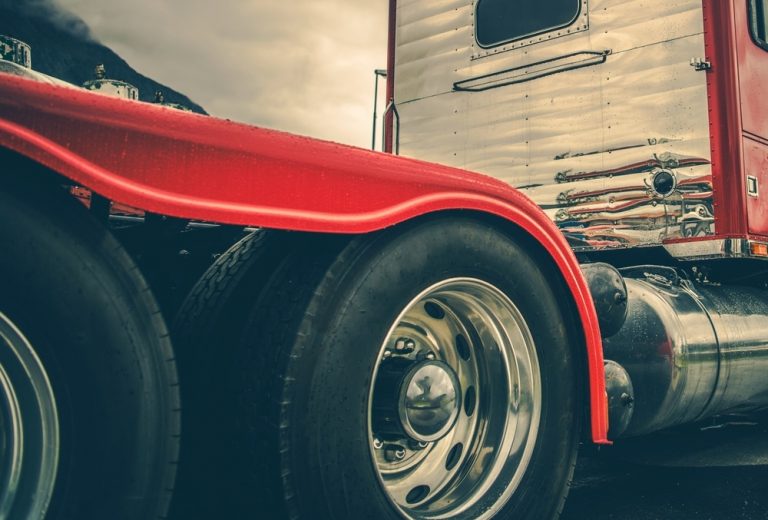As professionally trained commercial drivers, truckers know how to be prepared for anything they may encounter on the highway. But sometimes in the hectic schedule of being a short or long-haul trucker, we can get caught off guard by the weather changes and hazards that Fall driving can bring. For Texas truckers, safety also means preparing for things you may not expect.
No matter how long you have been a CDL trucker, a reminder to get ready for Fall is valuable. Get yourself in the mindset of the changing season and stay alert and prepared for additional road safety threats and challenges. Your load, your safety, and the lives of others depend on being ready to adapt to the changing road conditions.
1. Texas Truckers Remember to Watch Out for Leaves on the Road
As the seasons change in Texas and the leaves start to change color, it is a spectacular natural show. We are biased as Texas truckers, but nothing is more beautiful than driving during the Fall. But did you know that piles of leaves are actually a serious driving hazard?
When leaves accumulate on the roads and highways, they can become as slick as ice. You can find yourself losing contact with the road quickly when there is an accumulation of leaves (even on a sunny day, when there is no rain or frost). Slow down when you see the road ahead is littered with leaves, and if you can, change to the left lane until you are clear of the debris.
2. Texas Weather Is Unpredictable and so are Driving Conditions
Do you know what they say about the weather in Texas? If you do not like it right now, stick around and it will change in an hour. Our weather patterns in the state of Texas can be extremely unpredictable. We can have a hot Fall, and temperatures can dip into the 30F range the next morning. And you have to be ready for everything in between, including torrential rain, high winds, and in areas like East Texas, dust storms, and more.
Remember the rule to pull over if you feel it is not safe to drive. Use weather alert apps to send you a message based on your GPS location, to provide early warning for storms or icy conditions. Check out this list of trucker-friendly weather apps that you can use handsfree while you are on the road.
3. Stock Your Emergency Supplies and First Aid Kit
What should a professional truck driver always have in their berth? A first aid bag or kit that is always stocked. If you have a cut or burn, the last thing you want to find out is that you used up the supplies in your first aid kit. Fall is a good time to open it up, check out what is there, and then restock it so that you have all the essentials.
Your emergency supplies should include:
- A reflective vest
- Reflective hazard triangles (day and night warning signs) a minimum of (3) each
- Fire extinguisher (check the expiration date on your extinguisher once a year)
- Flashlight
- Toolkit and cables
What should be in a Texas trucker’s first aid kit? Check out this article on our blog for a complete list of recommended emergency supplies. And do not forget to have some other emergency items like candles, matches, a blanket, and non-perishable snacks.
If Texas truckers are caught in bad weather, or you are unable to drive through a flooded area, you may be sitting in your truck for a spell. Do not count on being able to get to the next truck stop quickly for a meal. Make sure you are prepared for a layover in an emergency situation.
4. Swerving to Avoid Wildlife Can Be Fatal for Texas Truckers
Most of us love nature (that is why we choose a career on the open road where the scenery is always changing and interesting). And no trucker wants to hit a deer, boar, or other kind of wildlife on the highway. As a civilian driver, the instinct is to ‘swerve and avoid’. As a CDL trucker, that instinct is not only wrong, it can be led to a life-threatening accident.
As you know, trucks cannot stop on a dime. It can take up to two hundred or more feet to completely stop a heavy loaded commercial truck. And the momentum will keep you going even as the air brakes are applied.
Deer and other wildlife are most active in wild areas along rural highways at dusk and then again at dawn. That is when truckers need to be paying extra attention. Watch for the “deer in the headlights” glow of eyes well ahead of your truck. Use your horn to encourage the wildlife to retreat back from the road.
If you are unsuccessful, do not swerve to avoid it. It is sad, but it is less dangerous for you to hit the animal than it is for you to cause a rapid brake and rollover. Texas truckers shouldn’t count on a deer whistle mounted on your hood to be a deterrent. Many studies have reported that they just do not work.
5. Choose Your Safe Rest Stops Ahead of Time
Safety considerations change when you are driving during the evening. And when you are required to stop and stay in your berth for a rest break, or sleep. Truck stops that may feel safe during daytime hours can present safety risks for both the driver, and security risks for your load.
If you are delivering containers to a new area that you are not familiar with, either in Texas or in a nearby state, make sure you do your research first. Texas truckers can check online for a guide to safe rest stops and plan your route and schedule to include HOS required stops in the safest locations. Protect yourself and your cargo against theft or damage.
6. Get Your Tire Treads Inspected
We have all seen enough alligators on the road to know that tires can lose re-tread in a blink of an eye. The cost of truck tires is expensive, but the cost of damage from a collision, increased accident insurance premiums and fines for safety infraction are far more expensive.
Texas truckers should be checking their tires before every trip. And make sure that as we enter the Fall season, you are having your tires professionally inspected.
Are there any other steps that you take in the Fall, to drive more safely? Share your comments and suggestions with us. Canal Cartage has been a trusted drayage, warehouse consolidation, and transmodal service provider in Houston Texas for more than thirty years. And safety comes first.



